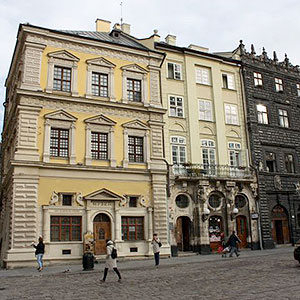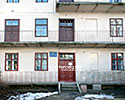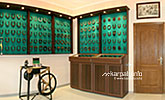- КАРПАТИ.INFO
- Ukraine
- Lviv region
- Lviv and surroundings
- Lviv
- Basivka
- Bibrka
- Bryukhovychi
- Velyky Lyubin
- Vynnyky
- Vyshnya
- Vidnyky
- Vovkiv
- Volya-Vysotska
- Horodok
- Hrimne
- Dubliany
- Zhovkva
- Zashkiv
- Zvenyhorod
- Kamyanka-Buzka
- Kernytsya
- Komarno
- Krekhiv
- Kulykiv
- Lavrykiv
- Pyatnychany
- Lviv suburbs
- Peremyshlyany
- Potelych
- Pustomyty
- Rava-Ruska
- Rakovets
- Svirzh
- Stara Skvaryava
- Stare Selo
- Tovshchiv
- Univ
- Shchyrets
- Lviv
- Museums, galleries, art exhibitions
- Museum of Horseshoes
- Lviv
- Basivka
- Bibrka
- Bryukhovychi
- Velyky Lyubin
- Vynnyky
- Vyshnya
- Vidnyky
- Vovkiv
- Volya-Vysotska
- Horodok
- Hrimne
- Dubliany
- Zhovkva
- Zashkiv
- Zvenyhorod
- Kamyanka-Buzka
- Kernytsya
- Komarno
- Krekhiv
- Kulykiv
- Lavrykiv
- Pyatnychany
- Lviv suburbs
- Peremyshlyany
- Potelych
- Pustomyty
- Rava-Ruska
- Rakovets
- Svirzh
- Stara Skvaryava
- Stare Selo
- Tovshchiv
- Univ
- Shchyrets
The Horseshoe Museum
The first museum of horseshoes in Ukraine was opened 30 October, 2014, in Stepan Gzhytskyi Lviv National University of Veterinary Medicine and Biotechnologies on the 230th anniversary of the foundation of veterinary education in Ukraine. The core of the local exposition is formed by the private collection of a prominent orthopaedist, Prof. Kazymyr Shchudlovsky, who started teaching veterinary students using horseshoes in the 19th century. The first thing he did was creation of an orthopaedic exposition classroom where students could practice their skills.
The renovated exposition was placed in one of the rooms belonging to the Surgery Department of the University. The materials there show the visitors history of forging and the art of horseshoeing in particular.
The craft of shoeing horses (and other animals as well) developed a very long time ago. Before metal horseshoes, hyposandals (woven from the vine) were used as a way to protect hose's hooves, then people started using the buffalo skin. In historical sources other prototypes are also mentioned: silver and gold sandals, which were fastened to the hoof with leather straps. It is believed that Chinese and Mongols were those who started implementing new materials and developed modern fashion of horseshoeing. It's worth to point out that for mastering this craft the person needed to be not only a skilled blacksmith, but also possess exceptional knowledge in animal anatomy. That's why the visitors might be interested to sea the Diploma of a Horseshoe Master which was given after a 6-month training on horse anatomy with passing a quite sophisticated exam.
The attention of visitors, undoubtedly, is going to be drawn by the collection of horseshoes counting about 300 items, from the oldest (17th century) to the modern ones; from massive to tiny and light ones; used in farming and in cavalry. There's an exquisite English horseshoe made of modern materials and considered the local rarity.
The next remarkable piece of the exposition is the collection of vykhnals (special nail type for adjusting the horseshoe to the hoof), where you can have a look at Austrian, German, Czech and Polish specimens.
In the museum you'll also see a variety of blacksmith's equipment (mini smithy, special tools, mobile smithy, etc), which would help to imagine the whole process of horseshoe making — from 'trying on' till the final stage.
The museum is located almost in the city centre, nearby Halytsky market.
More information
By car
Go along I. Franko street and turn into Zelena street, then go straigh on and turn left into K. Levytsky street. The museum is on the right from the road. It's possible to arrange a meeting with the hosts nearby the building of Lychakiv district administration.
© 2005-2025 karpaty.info
All rights reserved. No part of this site may be reproduced without our written permission.

 Ukraine
Ukraine Poland
Poland Slovakia
Slovakia
 Українською
Українською























































































































